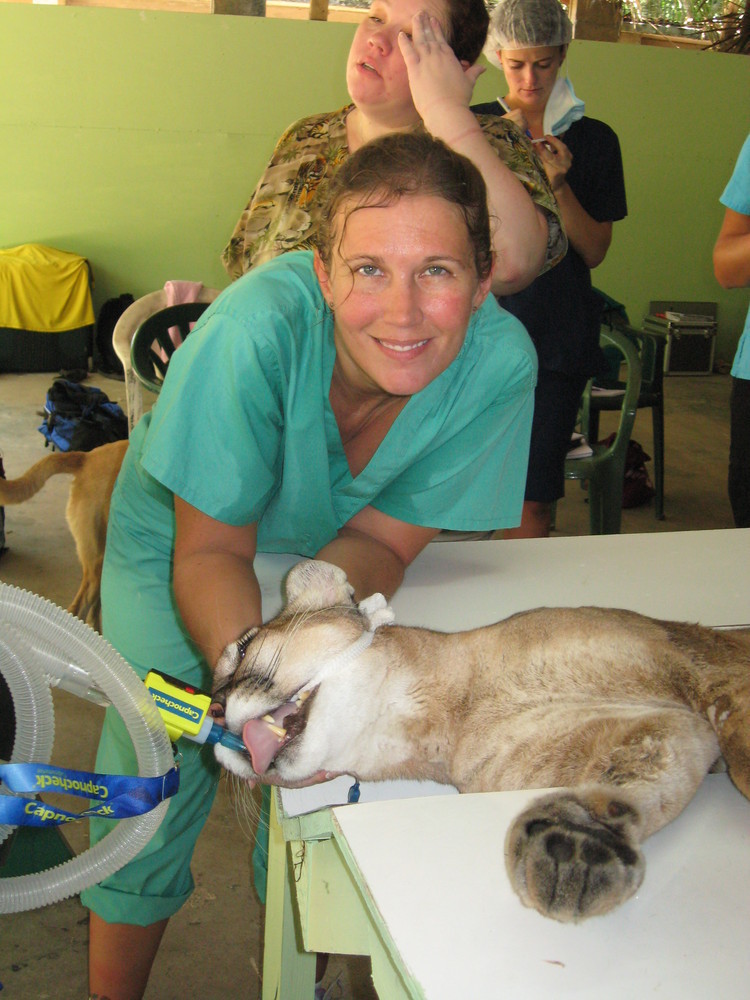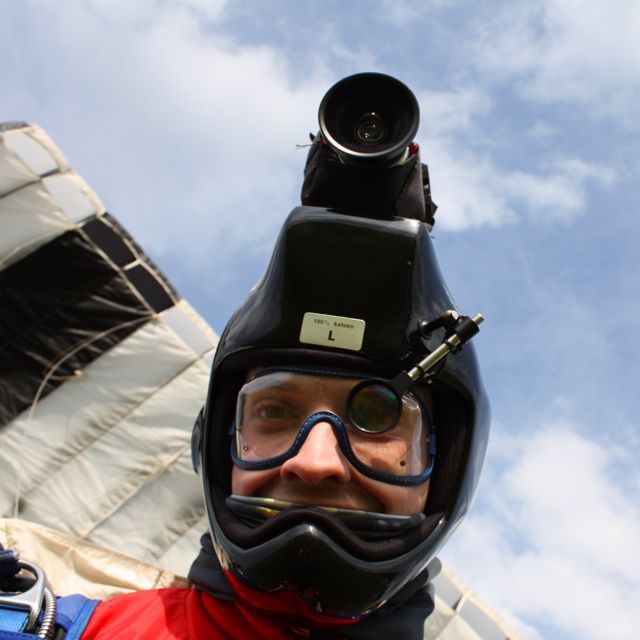Recommended Posts
It's the way you begin to learn about how to fly your canopy well...
Ciels-
Michele
Ciels-
Michele
******************************
I guess that's true, but the only issue I have with canopy control is flaring, and that's something I have to work on when I land anyway...I love the feeling of freefalling, so I'm a little iffy on the idea of pulling before I have to!
*****************************************
Blondes do have more fun!
QuoteI guess that's true, but the only issue I have with canopy control is flaring, and that's something I have to work on when I land anyway...I love the feeling of freefalling, so I'm a little iffy on the idea of pulling before I have to!
I've done it and love it. I love freefall as well. I love canopy just as much. I'm actually hoping to have a good weather weekend this weekend so I can pull high and play more under canopy.
Try it once. Play with your canopy. What happens when you play with the front risers, the rear risers? How much altitude do you lose when you use your risers? How do flat turns feel? What happens when you stall your canopy? Where is the stall point on your canopy? How about quick and dramatic turns in opposite directions?
All of the knowledge you can gain from playing under canopy that high can translate well into knowing your canopy when you go to land it.
Life is short! Break the rules! Forgive quickly! Kiss slowly! Love truly, Laugh uncontrollably. And never regret anything that made you smile.
All of the knowledge you can gain from playing under canopy that high can translate well into knowing your canopy when you go to land it.
***********************************
Definitely good advice to keep in mind. Thanx!
*****************************************
Blondes do have more fun!
0013 0
QuoteAll of the knowledge you can gain from playing under canopy that high can translate well into knowing your canopy when you go to land it.
you might need it when landing a bit off because of the longer possible travel distance
--------
www.youtube.com/l0013
www.youtube.com/l0013
QuoteQuoteAll of the knowledge you can gain from playing under canopy that high can translate well into knowing your canopy when you go to land it.
you might need it when landing a bit off because of the longer possible travel distance
True. I did a hop 'n' pop at Elsinore. I was under canopy at 12,000. It was amazing, and I still landed in the student area. I pay attention to winds aloft, etc. Plus, I had others doing it with me so I was able to watch their flight pattern as well.
Life is short! Break the rules! Forgive quickly! Kiss slowly! Love truly, Laugh uncontrollably. And never regret anything that made you smile.
sigsby 0
Or a twin bonanza.
Quotewho the hell wants to fly a canopy from 13,000 feet or so if they really don't have to?!
These guys
Can't wait to try that!
Regarding the original question, I'm doing my AFF progression out of a Caravan. The main-side JM has always been inside the plane following the student out, so I don't think it could happen.
--
"I'll tell you how all skydivers are judged, . They are judged by the laws of physics." - kkeenan
"You jump out, pull the string and either live or die. What's there to be good at?
"I'll tell you how all skydivers are judged, . They are judged by the laws of physics." - kkeenan
"You jump out, pull the string and either live or die. What's there to be good at?
Frodo 0
Thanks coaster for this one - made me smile once again after reading that articleQuoteQuotewho the hell wants to fly a canopy from 13,000 feet or so if they really don't have to?!
These guys
Can't wait to try that!
Michele 1
Quotethat's something I have to work on when I land anyway
So why not try to find the exact moment - that split second - where you plane out...but up high, and with all the room to spare? Over and over, find that sweet spot, where you stop "going down" and swing forward like a pendulum (only more gently)...where, if you were only 1 foot off the gound, you would jus step back onto terra firma, with no problems, all forward speed gone? How does it work when you flare fast? Slow? In between? 2-stage flare? If you do these up high, you learn more in a canopy ride than you could ever imagine. And it does translate directly to the flare that counts - the one which lands you on the ground.
Flying a canopy is not just landing. Like Cora said, it's knowing how to get your canopy to do what you ask it to do, and not be a passenger. It's about knowing alti loss for different types of turns...it's about learning the sweet spot. It's about knowing if you do X, Y will happen. You will never know this until you really start practicing it, and you might need it before you have explored your canopy's performance.
If you had a reserve ride, would you wait until you were at the moment of actual landing to find out how it flares? Or would you try to figure out that high enough so that when you came down, you had a better idea than nothing about it's flaring capabilities and flare points?
Also, keep in mind that what you learn at 3K under canopy can save you on final. Some doofus doesn't see you, and carves in front of you. You're about 75-100 feet from the ground; he's all of 12 feet in front of you, and a little bit lower now - and he has the right of way. Would you know how to get away from him? Would you just hope you'll be o.k.? Would you panic-turn yourself into the ground? Or do you have the ability to flat turn 45 degrees, back to full flight, and land safely? It's what you learn up high that translates to your actions near the ground...
The value of getting to know your canopy is simple. It will save your life.
Ciels-
Michele
~Do Angels keep the dreams we seek
While our hearts lie bleeding?~





Me....to have more time under canopy, so I can learn a ton about it. And I'm not a crewdawg...
Pulling high is not bad. It can be cold, but it is not bad. It's the way you begin to learn about how to fly your canopy well...
Ciels-
Michele
~Do Angels keep the dreams we seek
While our hearts lie bleeding?~
Share this post
Link to post
Share on other sites